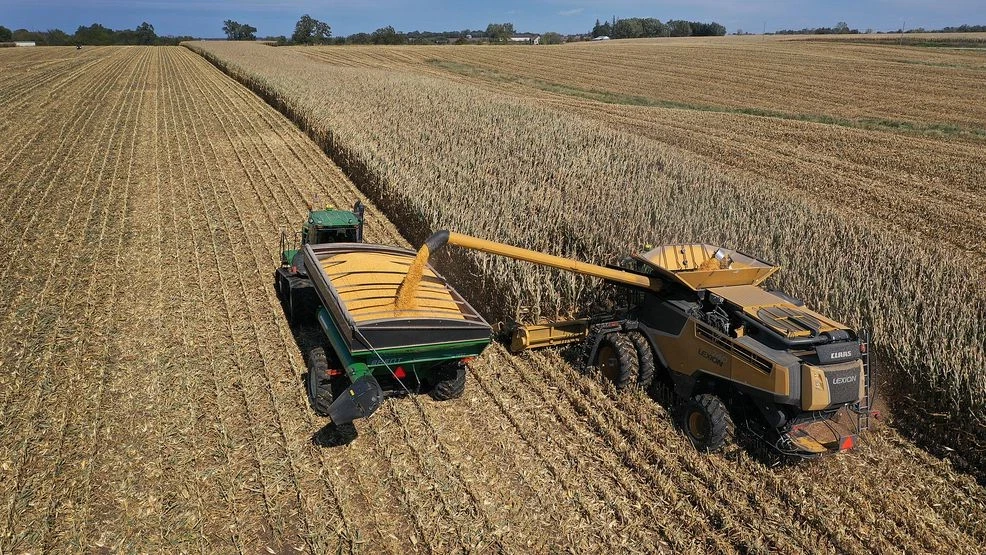
American farmers are facing a “crisis in the heartland” with low commodity prices, high input prices and, for some more than others, new stress from tariffs, according to the president of the National Corn Growers Association.
“It’s like the perfect storm,” said President Kenneth Hartman Jr., who farms corn, soybeans and wheat in southern Illinois.
The American Soybean Association has called on President Donald Trump to prioritize its crops in trade talks with China.
last month that their exports to their largest foreign customer have dried up because retaliatory tariffs have made their soybeans more expensive than those grown in South America.
Hartman said corn growers haven’t been hit nearly as hard by .
But that doesn’t mean corn growers aren’t feeling economic stress.
A NCGA survey released Wednesday evening found nearly half of farmers, 46%, believe the U.S. is on the brink of a farm crisis. Another third of farmers said the country “maybe” on the brink of a farm crisis.
Around three-quarters of farmers said they are at least moderately concerned about the farm economy.
And around two-thirds of farmers were more concerned about their farm finances now than they were a year ago.
“Our biggest problem we have is we’re just growing so much corn,” Hartman said.
That might sound like a good problem to have, but the surplus is driving down prices at the same time that input costs remain high.
The average corn production costs have dropped just 3% from their peak in 2022, while corn prices have declined by over 50% over the same period, according to the NCGA.
A farmer with an average cost of production who receives the expected average price is .
“Farmers are more efficient in their planting practices, so we’re in many ways victims of our own success,” NCGA spokesman Bryan Goodman said.
Hartman said corn growers are looking at a 16.7-billion bushel crop this year, which is a billion bushels more than they originally expected.
Technology has helped farmers increase their yields, and now Hartman said they need to open up new markets to keep the prices from going any lower.
“We’ve got a record corn crop in the making this year,” said , an agricultural economist at Oklahoma State University.
Peel said crops are more dependent on global markets than American meat producers.
“There’s a pretty big difference right now between the crop side and the livestock side, in that we’ve generally got relatively low crop prices. Crop farmers are really struggling for a variety of reasons, for all the things that affect prices. Tariffs are just part of that. But on the livestock side, particularly in cattle, we’ve got record-high prices right now,” Peel said.
Cattle ranchers, unlike crop farmers, are seeing multi-decade lows in production. Coupled with strong domestic demand, that’s keeping beef prices high.
For all farmers, Peel said the tariff situation will take a while to fully develop.
Even on the beef side, China was America’s third-largest export market. And we’re basically out of that market right now, Peel said.
Most of the impacts from tariffs will ultimately be negative for farmers, Peel said.
“Markets are very efficient if we let them work, and tariffs interfere with how markets work,” he said.
Peel said agriculture is decentralized, so every individual farmer has an incentive to grow more and sell more, even if that causes a surplus on the whole.
“When prices are high, they want to sell more. When prices are low, they need to try to sell more to make up for the fact that prices are low. So, that’s kind of the dilemma that they find themselves in right now,” Peel said.
Both Peel and Hartman said inflation is affecting farmers, just like it’s affecting American households.
Hartman and the NCGA is urging Congress to pass a bill that would , gasoline blended with up to 15% ethanol. An environmental rule currently limits E15 sales in the summertime.
And they want increased foreign market access.
Hartman said a little over a third of U.S. corn goes into ethanol.
About 15% of corn is exported, but that jumps to 30% when counting ethanol and dried distillers grains, typically used as a protein-rich animal feed, that’s an ethanol co-product.
Giving growers more ways, more places, to sell their products will help offset the high cost of inputs, Hartman said.
“If we don’t help the farmers out creating markets, you’re going to see a domino effect,” Hartman said.
“Rural America will lose,” he added.



